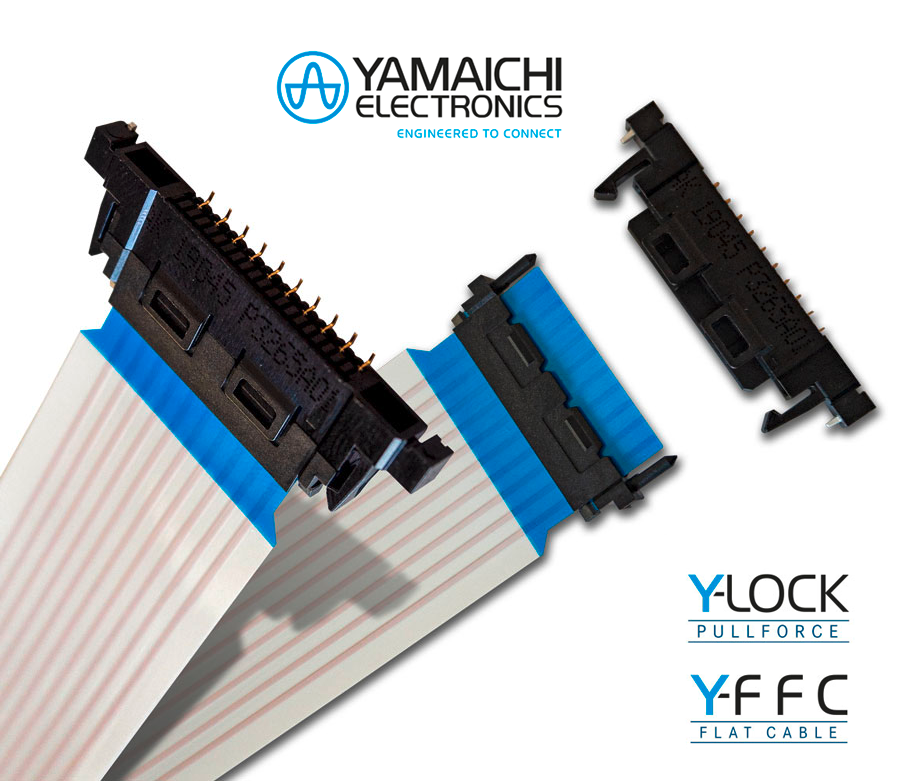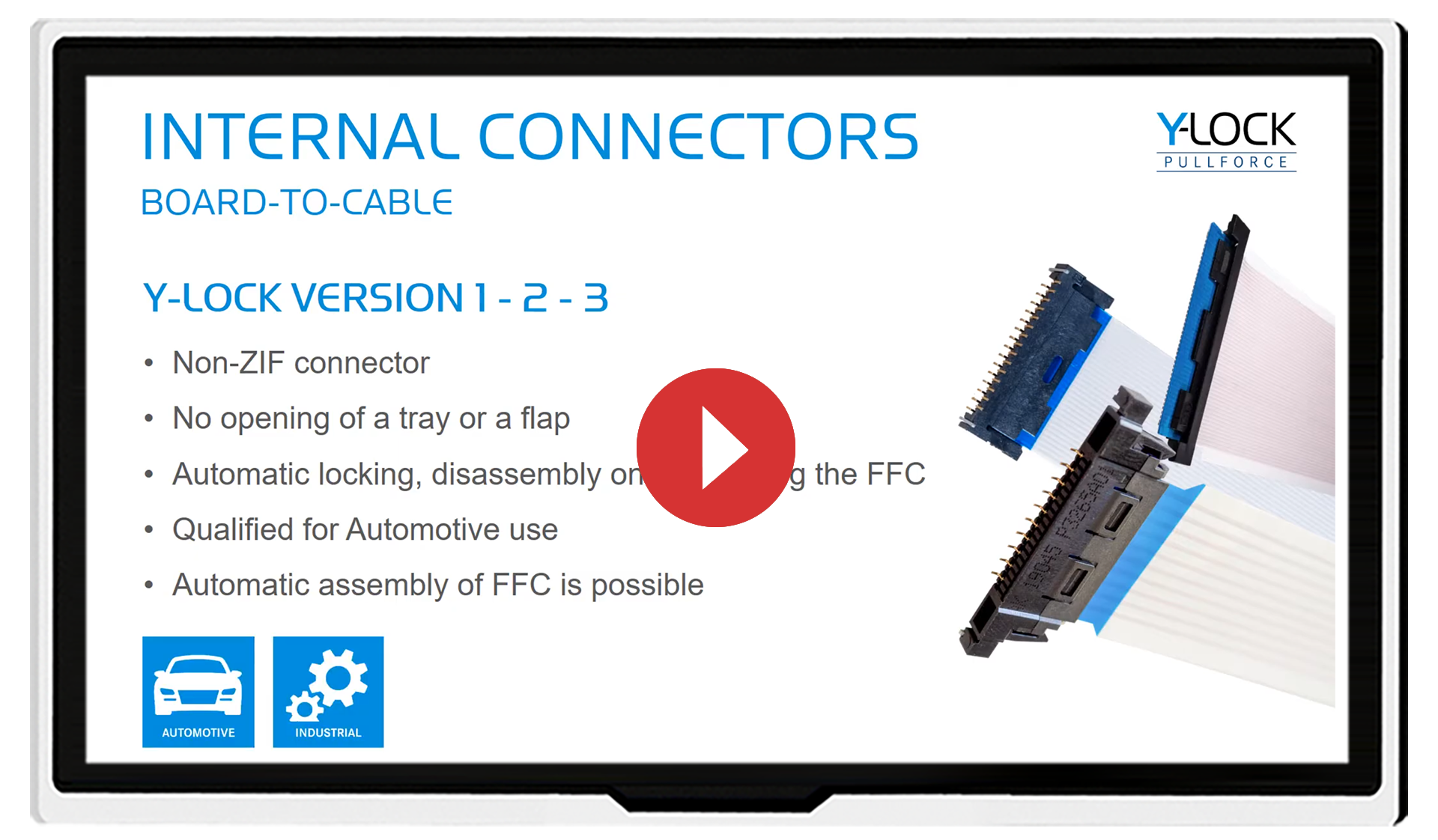The Y-Lock series is a board-to-cable system and available in three different versions. In the last years, the
renowned system has proven itself. It is successful in diverse automotive applications. The FFC (Flexible
Flat Cables) suitable for the connector are produced in Yamaichi Electronics‘ own factory in Germany.
The non-ZIF-based connector system is especially outstanding for its locking system, which works without
opening or closing a flap or drawer and without actuating an unlocking mechanism. In the current version 1,
the interlock is provided with a ratchet hook on the housing of the connector, which engages behind the
supporting tape of the FFC/FPC. Both contacting and removal of the FFC are very simple using a defined
pull-out force.
Positive features of
version 1 retained
The Y-Lock version 2 retains all the positive features of version 1, but also offers some interesting new
features. An additional plastic stiffener has been added that is mechanically assembled with the FFC. The
stiffener then engages with the connector. This new system makes guiding the FFC and inserting the FFC into
the connector more convenient. The pull-out force for the FFC has also been increased from about 10 N to about 25 N.
Another advantage of the Y-Lock series is the greatest possible security of the contact coverage between FFC
pads and connector. The contact coverage is provided by the FFC guide rails in the connector. This
facilitates even more the FFC guiding by the stiffener which positions the FFC. That makes it simply
impossible for the FFC to be crooked, which is always a possibility when using ZIF connectors. That means
there is no danger of a lack of contact coverage.



